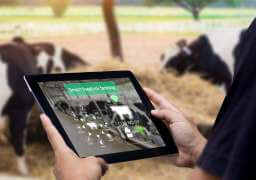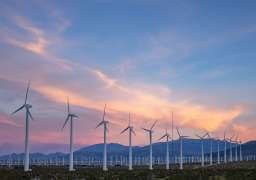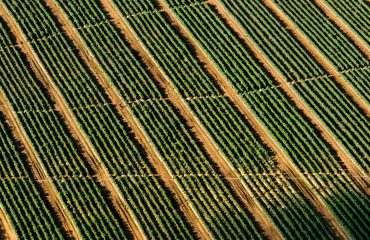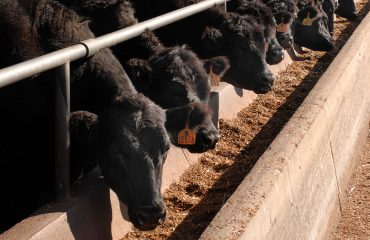As climate-tech startups work to create innovative solutions in a world increasingly impacted b...
Impacts of heat stress on dairy cattle
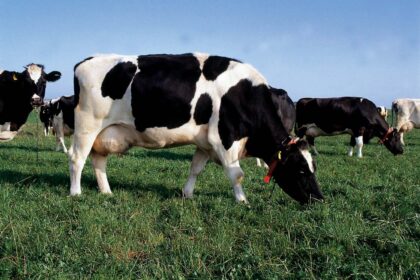
Heat stress occurs when an organism’s body is subjected to excessive heat and struggle to maintain its normal body temperature. It is a condition that occurs when the body’s cooling mechanisms become overwhelmed, typically due to high environmental temperature, humidity, or a combination of both.
In context of dairy cattle, they are particularly susceptible to heat stress because they have a limited ability to sweat, and their large body size and metabolic heat production make it challenging to regulate their body temperature. Heat stress can have significant impacts on dairy cattle, affecting their overall health, productivity and welfare. Some key impacts of heat stress on dairy cattle includes:
- Decreased milk production:
Heat stress can lead to a decrease in milk production in dairy cows. High temperatures can reduce feed intake, disrupt rumen fermentation, and impair nutrient absorption, all of which can negatively affect milk yield. Additionally, heat-stressed cows allocate more energy towards thermoregulation, diverting resources away from milk synthesis.
- Reduced reproductive efficiency:
Heat stress can adversely affect reproductive performance in dairy cattle. High temperature can disrupt estrus cycles, causing irregular or delayed ovulation, and decrease conception rates. This can result in reduced pregnancy rates and longer calving intervals.
- Impaired feed intake and digestion:
Heat stressed cows often experience reduced feed intake due to decreased appetite and changes in rumen function. This can lead to inadequate nutrient intake, weight loss, and decreased body condition score. Heat stress can also alter rumen microbial population, affecting feed digestion and nutrient utilization.
- Increased susceptibility to diseases:
Heat stress weakens the immune system of dairy cattle, making them more susceptible to various diseases and infections. Heat-stressed cows are more prone to mastitis, respiratory diseases, metabolic disorders, and reproductive tract infections. These health issues can further impact milk production and overall cattle’s wellbeing.
- Behavioral and physiological changes:
Heat-stressed cattle exhibit behavioral changes such as reduced activity, increased respiration rate, and seeking shade and water sources. They may also pant excessively, swear, and have increased water consumption in an attempt to dissipate heat. These physiological responses can lead to dehydration, electrolyte imbalance, and heat exhaustion.
The severity of the impact depends on factors such as the duration and intensity of heat exposure, humidity levels, and the animal’s age, breed, and overall health status.
Monitoring body temperature using rectal thermometers or any other temperature sensing device together with behavioral observation is crucial for assessing earlier heat stress. Moreover, cattle’s health performance in terms of reproduction and milk production needs to be monitored continuously. If signs of heat stress are observed, then a comprehensive plan of management strategies needs to be followed to tackle it. For instance, the impact of heat stress on dairy cattle can be mitigated by providing shades and proper ventilation in barns, ensuring access to clean and cool drinking water, adjusting feeding practices to maintain nutrients’ intake, and implementing heat abatement techniques like sprinklers and misters. The diet of the cattle needs to be adjusted as per the nutritionist’s advice. Modifying the ration to optimize nutrient intake and provision of additives that enhance heat tolerance, such as electrolytes or specific feed supplements should be done. Genetic selection for heat tolerant breeds and optimizing herd health management are also important considerations in reducing the negative effects of heat stress on dairy cattle. Monitoring weather conditions by using temperature-humidity index (THI) or the temperature-humidity combination index (THCI) and implementing heat abatement strategies accordingly are essential for minimizing the negative effects of heat stress on animals.
The financial impact of heat stress on dairy cattle can be quite significant. The effects of heat stress can lead to decreased milk production, lower milk quantity, and reduced fertility rates, which can all negatively impact a dairy farmer’s bottom line. In addition, cows that are heat-stressed may require more veterinary care, further increasing the costs associated with their raising and upkeeping. The cost of providing additional infrastructure or equipment to mitigate heat stress, such as additional shade or cooling systems, can also be substantial. Overall, the financial impact of heat stress on dairy cattle can be significant and this makes it important for dairy farmers to take steps to minimize it. By taking these measures, farmers may be able to reduce the chances of heat stress affecting herd productivity and profitability.
Climate decision intelligence powered by mistEO enhances the ability of dairy farmers to measure, monitor, and manage the impacts of heat stress on cattle. It provides real-time data, predictive analytics, and personalized recommendations, enabling proactive and targeted interventions to safeguard the health and well-being of dairy cattle in the face of heat stress challenges.
MistEO refers to a system that combines satellite-based Earth observation data and advanced analytics to provide real-time information and actionable insights related to climate and environmental conditions. MistEO utilizes satellite imagery and remote sensing data to monitor weather conditions, including temperature, humidity, and heat stress indices, with high spatial and temporal resolution. This data provides precise and up-to-date information on local climate patterns, enabling more accurate assessment of heat stress risks for dairy cattle. By analyzing historical climate data and current weather conditions, mistEO can generate early warnings and alerts about upcoming heat stress events. This allows dairy farmers to proactively prepare for heat stress and implement appropriate management strategies to mitigate its impact on cattle. MistEO can assess the vulnerability of dairy cattle to heat stress based on various factors, such as breed, age, and physiological status. MistEO can suggest optimal cooling strategies based on the specific conditions of the dairy farm, such as the layout of barns, availability of shade, and water sources. It can identify areas where additional cooling measures, like sprinklers or misting systems, should be implemented to provide targeted relief to the cattle during heat stress periods. By leveraging mistEO’s analytics capabilities, dairy farmers can make data-driven decisions related to heat stress management. They can assess the effectiveness of their current practices, identify areas for improvement, and evaluate the impact of different interventions on cattle health and productivity.
References
Atrian, P., & Shahryar, H. A. (2012). Heat stress in dairy cows (a review). Research in Zoology, 2(4), 31-37.
Herbut, P., Angrecka, S., & Walczak, J. (2018). Environmental parameters to assessing of heat stress in dairy cattle—a review. International journal of biometeorology, 62, 2089-2097.
Herbut, P., Hoffmann, G., Angrecka, S., Godyń, D., Vieira, F. M. C., Adamczyk, K., & Kupczyński, R. (2021). The effects of heat stress on the behaviour of dairy cows–a review. Annals of Animal Science, 21(2), 385-402.
Ji, B., Banhazi, T., Perano, K., Ghahramani, A., Bowtell, L., Wang, C., & Li, B. (2020). A review of measuring, assessing and mitigating heat stress in dairy cattle. Biosystems Engineering, 199, 4-26.
Kadzere, C. T., Murphy, M. R., Silanikove, N., & Maltz, E. (2002). Heat stress in lactating dairy cows: a review. Livestock production science, 77(1), 59-91.
Kamal, R., Dutt, T., Patel, M., Dey, A., Bharti, P. K., & Chandran, P. C. (2018). Heat stress and effect of shade materials on hormonal and behavior response of dairy cattle: a review. Tropical Animal Health and Production, 50, 701-706.
Liu, J., Li, L., Chen, X., Lu, Y., & Wang, D. (2019). Effects of heat stress on body temperature, milk production, and reproduction in dairy cows: A novel idea for monitoring and evaluation of heat stress—A review. Asian-Australasian journal of animal sciences, 32(9), 1332.
Ravagnolo, O., Misztal, I., & Hoogenboom, G. (2000). Genetic component of heat stress in dairy cattle, development of heat index function. Journal of dairy science, 83(9), 2120-2125.
Polsky, L., & von Keyserlingk, M. A. (2017). Invited review: Effects of heat stress on dairy cattle welfare. Journal of dairy science, 100(11), 8645-8657.







